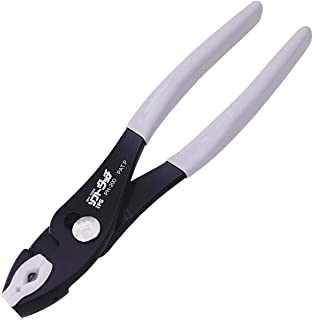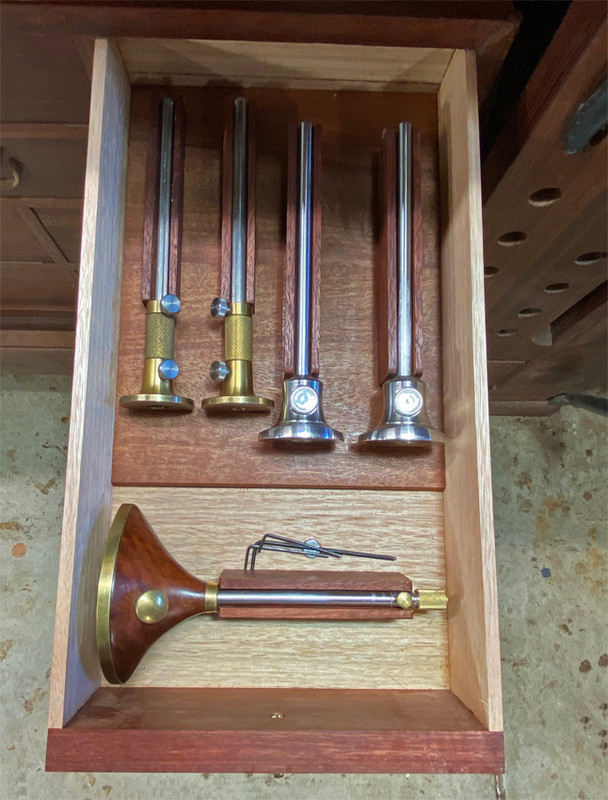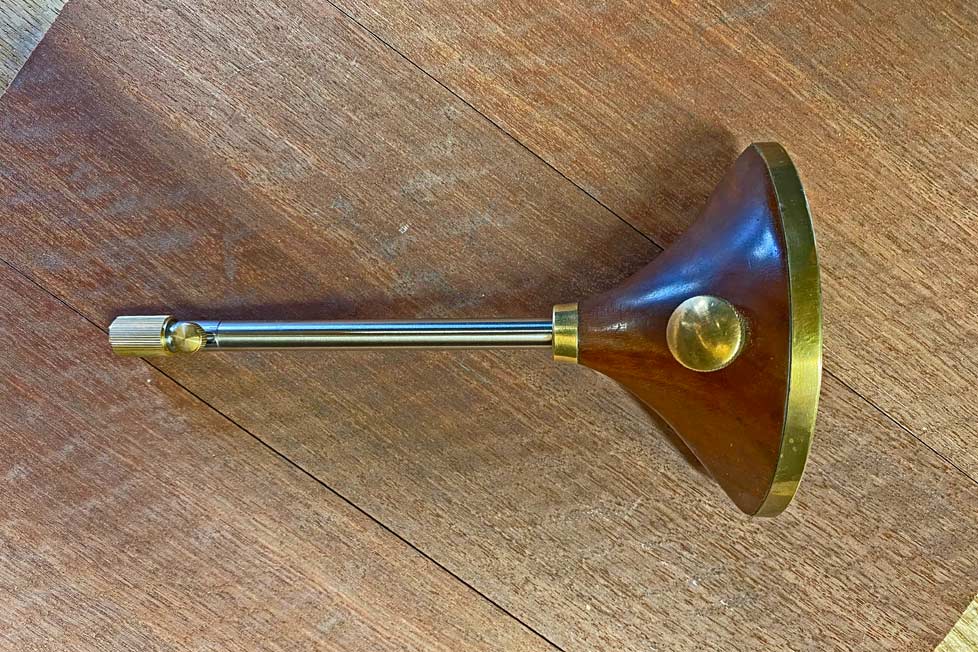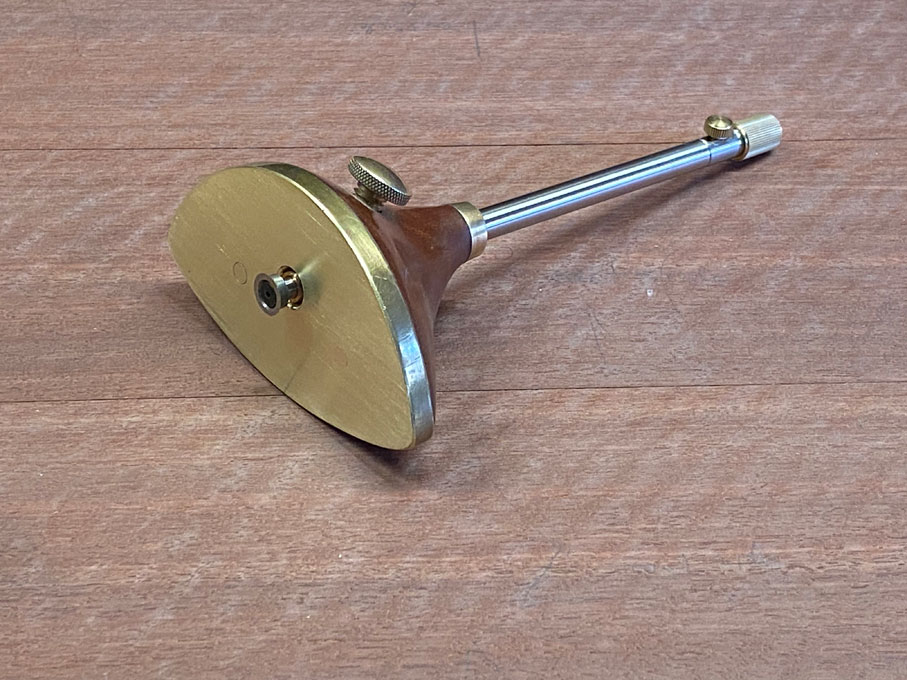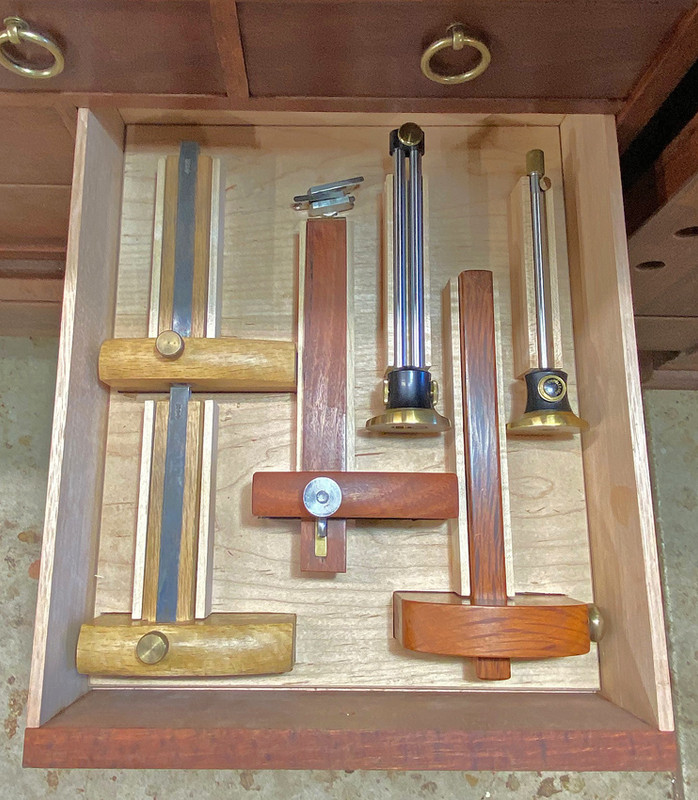I had the same problem mostly with my Quangsheng gauges and les so with the Veritas dual gauge (I supose because it has the extra shaft clamp that holds the two rods in the same relative position).
To solve the problem I have used a leather hole punch tool (the one with the revolving head that makes different sized holes) and a scrap of leather about 1.5 – 2.0mm thick.
I punched a hole at the same diameter of the brass screw and put the little round off-cut in the screw hole with swede side towards the rod. Then I’ve put the screw back in.
The small piece of leather increases drastically the friction and the rod stays put at the desired setting.
To solve the problem I have used a leather hole punch tool (the one with the revolving head that makes different sized holes) and a scrap of leather about 1.5 – 2.0mm thick.
I punched a hole at the same diameter of the brass screw and put the little round off-cut in the screw hole with swede side towards the rod. Then I’ve put the screw back in.
The small piece of leather increases drastically the friction and the rod stays put at the desired setting.





